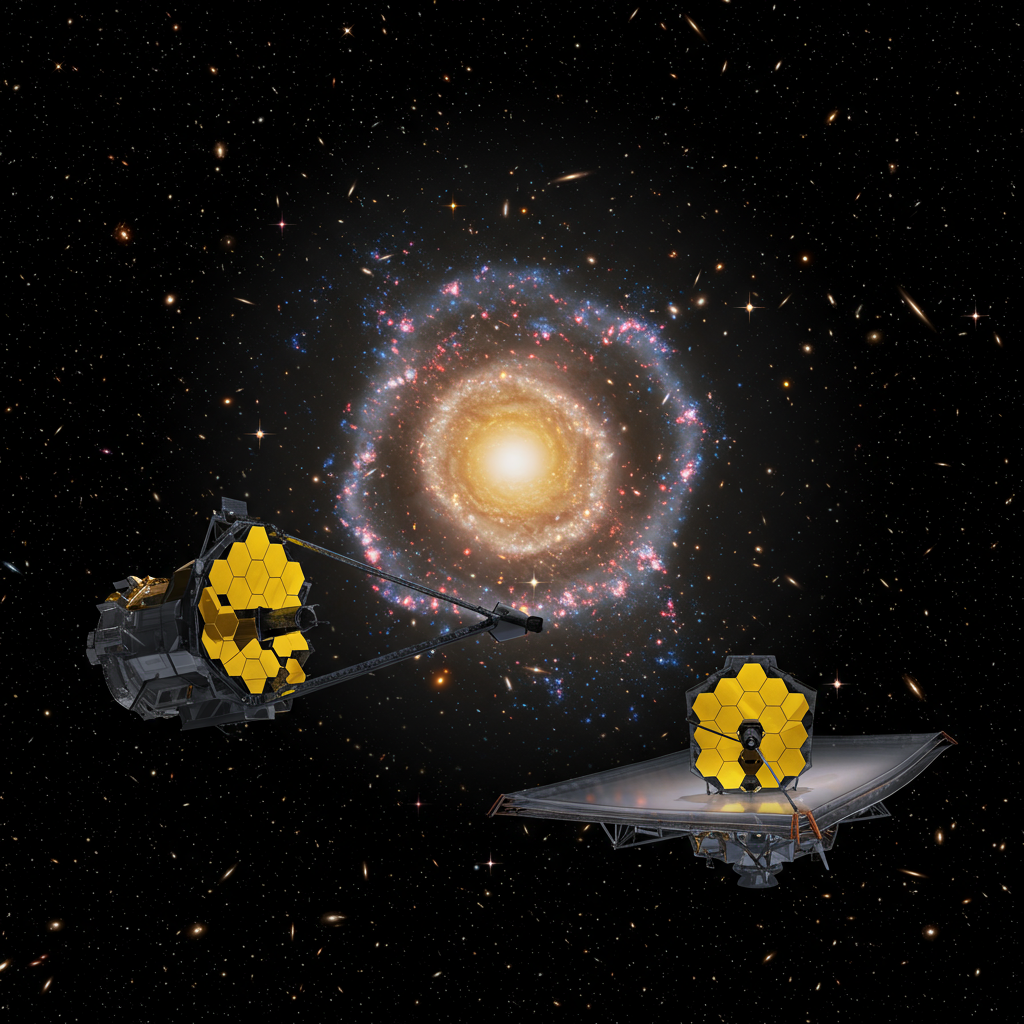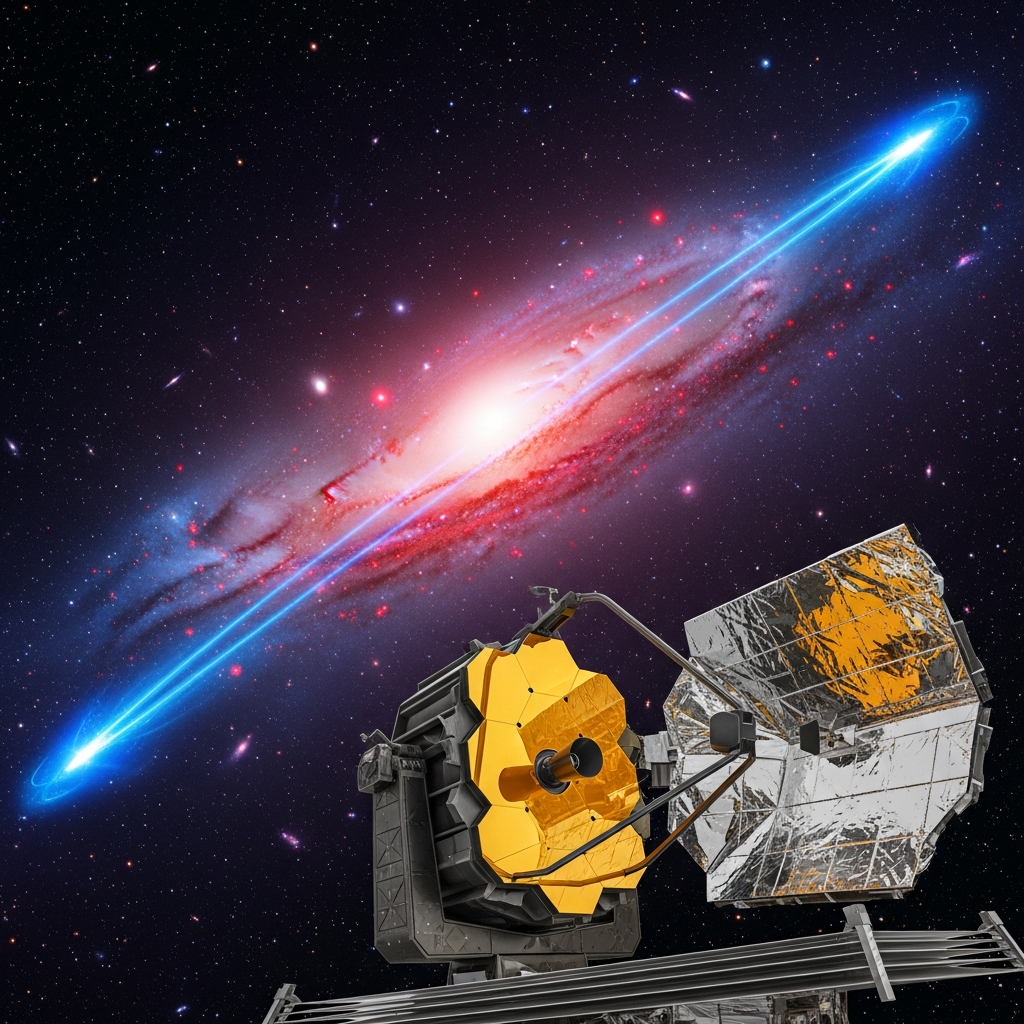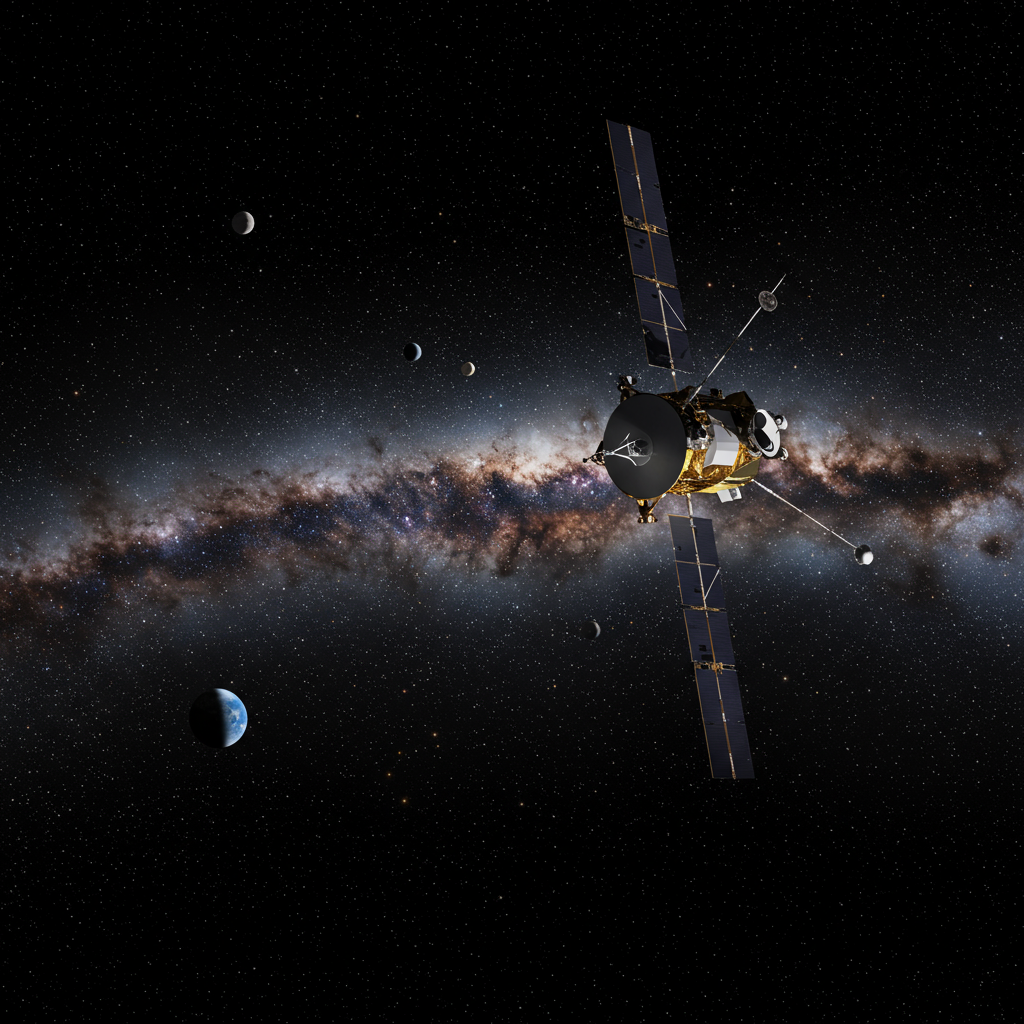NASA’s James Webb Space Telescope has peered into the heart of the colossal bullet cluster, a stunning cosmic crash site located 3.8 billion light-years away. These unprecedented near-infrared observations have allowed scientists to create the most detailed map yet of this system’s mass distribution, particularly its enigmatic dark matter. The findings provide crucial new insights into dark matter’s nature and the violent history of this immense structure, refining our understanding of the invisible scaffolding holding the universe together.
Peering Into a Cosmic Pile-Up
The Bullet Cluster is not a single object but the dramatic aftermath of two massive galaxy clusters colliding at immense speed. Located in the constellation Carina, this system is a cornerstone for studying dark matter because the high-speed impact caused a remarkable separation of components.
Typically, galaxy clusters contain galaxies (made of stars, gas, and dust), hot gas distributed between the galaxies, and a vast amount of unseen dark matter. All these components are usually bound together by gravity. However, in the Bullet Cluster collision, the hot gas from each cluster slammed into each other and slowed down due, forming a shockwave and heating up immensely (visible in X-rays). The stars within the galaxies, being much less affected by the interaction, largely sailed through. Crucially, the dark matter, which interacts minimally with ordinary matter and itself, also passed through relatively unimpeded. This resulted in a physical separation: the hot gas lagged behind, while the galaxies and their associated dark matter continued onward. This separation is powerful evidence for dark matter’s existence.
Mapping the Invisible with Cosmic Lenses
Webb’s mission includes using its powerful infrared vision to probe distant and obscured structures. For the Bullet Cluster, researchers utilized Webb’s NIRCam instrument to capture exceptionally detailed images of the region. These images revealed a wealth of faint, distant background galaxies that were previously unseen or too blurred to be useful.
The key to mapping the Bullet Cluster’s mass, including the invisible dark matter, is a phenomenon called gravitational lensing. Massive objects warp the fabric of spacetime around them. As light from distant galaxies travels through this warped spacetime, it gets bent, magnified, and distorted, much like light passing through a glass lens or viewing pebbles on the bottom of a pond through rippling water.
By carefully measuring the tiny distortions in the shapes of thousands of background galaxies seen in Webb’s crisp images, scientists can precisely calculate how much mass is warping the light at different points across the cluster. This allows them to infer the distribution of the total mass, both visible (stars, gas) and invisible (dark matter). Sangjun Cha of Yonsei University, lead author of a study on these findings published in The Astrophysical Journal Letters, highlighted that this research used the largest gravitational lensing dataset ever assembled for the Bullet Cluster. This unprecedented data volume enabled a more precise measurement of the cluster’s mass distribution, extending from its dense core out to its vast outskirts.
Dark Matter Holds the Line
The refined mass map created using Webb’s observations, combined with X-ray data from NASA’s Chandra X-ray Observatory showing the hot gas, provides striking visual evidence for dark matter’s properties. The composite images show the galaxies (visible light), the hot gas (pink X-rays), and the mapped dark matter (blue).
Previous studies had already identified invisible mass separate from the hot gas, strongly suggesting dark matter. However, Webb’s detailed mapping offers new precision. A critical finding is that the blue areas representing the dark matter distribution closely align with the positions of the galaxies themselves, even though the hot gas was significantly displaced during the collision.
This precise alignment is powerful evidence that dark matter particles do not significantly interact with each other through forces other than gravity. If dark matter had strong “self-interactions,” the collision might have also slowed down or stripped away some of the dark matter from the galaxies, causing an observable offset between the galaxies and their associated dark matter halos. The lack of such an offset, confirmed with greater certainty by Webb’s data, places tighter constraints on the possible nature and behavior of dark matter particles than ever before. As co-author Kyle Finner of IPAC at Caltech noted, Webb’s images dramatically improved their ability to pinpoint the invisible dark matter.
The team also looked at stars that were stripped from their parent galaxies during the collision, now drifting freely within the cluster’s gravitational pull – known as intracluster stars. They found that the distribution of these unbound stars also closely matches the distribution of dark matter. This suggests that these intracluster stars are primarily held in place by the gravity of the cluster’s overall dark matter halo, reinforcing the idea that this diffuse stellar light serves as a reliable tracer for the invisible mass, even in chaotic environments like the Bullet Cluster.
Unraveling a Violent Past
Beyond confirming dark matter’s non-interacting nature, the detailed structure revealed in Webb’s mass map hints at a more complex history for the Bullet Cluster than a simple head-on crash. The larger of the two original clusters, now visible on the left side of the composite image, shows an asymmetric, elongated region of mass along its edge.
This asymmetry suggests that this larger cluster might have been involved in more than one collision event billions of years ago. It could have experienced previous minor mergers before or after its dramatic impact with the cluster now on the right. A series of violent interactions could have resulted in the kind of stretched and asymmetric mass distribution observed by Webb. James Jee of Yonsei University and UC Davis, another co-author, explained that a more complicated collision scenario would naturally lead to such a large, asymmetric elongation. Studying these detailed mass structures helps astronomers piece together the turbulent evolutionary history of the universe’s largest structures.
The Head of a Cosmic Giant
The Bullet Cluster is vast, even for a galaxy cluster. While Webb’s NIRCam covered a significant portion of the central collision zone, it captured only a part of the entire system. Jee likened it to seeing just the “head of a giant.” The current data allows astronomers to extrapolate the total mass of the whole cluster, but a complete map is still needed for the most precise measurements.
Fortunately, the next generation of space telescopes is on the horizon. NASA’s Nancy Grace Roman Space Telescope, scheduled for launch by May 2027, is designed to provide expansive, wide-field views in near-infrared light. Roman’s capabilities will be ideal for mapping the full extent of large structures like the Bullet Cluster. Finner anticipates that combining Roman’s comprehensive mass estimates with Webb’s detailed central views will allow scientists to create sophisticated computer simulations to “replay” the entire complex collision event. This will further refine our understanding of cluster formation, dark matter distribution, and the fundamental physics governing these interactions.
Webb’s sharp new images of the Bullet Cluster serve as a powerful reminder of dark matter’s pervasive influence and the complex dynamics of the universe. By providing the most precise map of dark matter in this iconic system to date, the telescope is pushing the boundaries of our knowledge about the cosmos and the invisible matter that shapes it.
Frequently Asked Questions
What is the Bullet Cluster and why is it key to studying dark matter?
The Bullet Cluster is the result of a high-speed collision between two massive galaxy clusters nearly 4 billion light-years away. It is crucial for studying dark matter because the collision caused a physical separation between the hot gas (ordinary matter) and the dark matter component. The hot gas was slowed by the impact, while the dark matter passed through relatively unimpeded. This visible separation provides strong observational evidence for dark matter’s existence and helps scientists study its properties.
How did the James Webb Space Telescope map dark matter in the Bullet Cluster?
The James Webb Space Telescope used its powerful near-infrared camera (NIRCam) to capture detailed images of the Bullet Cluster. Scientists analyzed these images to observe the slight distortions in the shapes of thousands of distant galaxies located behind the cluster. This phenomenon, known as gravitational lensing, occurs because the cluster’s immense mass warps spacetime, bending the background light. By measuring these distortions, researchers could precisely map the distribution of the total mass, including the invisible dark matter, creating the most detailed map of the region to date.
What did Webb’s findings reveal about dark matter’s behavior and the Bullet Cluster’s past?
Webb’s observations revealed that the distribution of dark matter in the Bullet Cluster aligns closely with the galaxies, even though the hot gas was stripped away during the collision. This alignment suggests that dark matter particles do not significantly interact with themselves through forces other than gravity, providing stricter limits on dark matter’s behavior. Additionally, the detailed mass map showed an asymmetric structure in one of the clusters, hinting that the Bullet Cluster’s formation might have involved a more complex series of collisions than a single two-cluster impact.
Word Count Check: 1154 words




